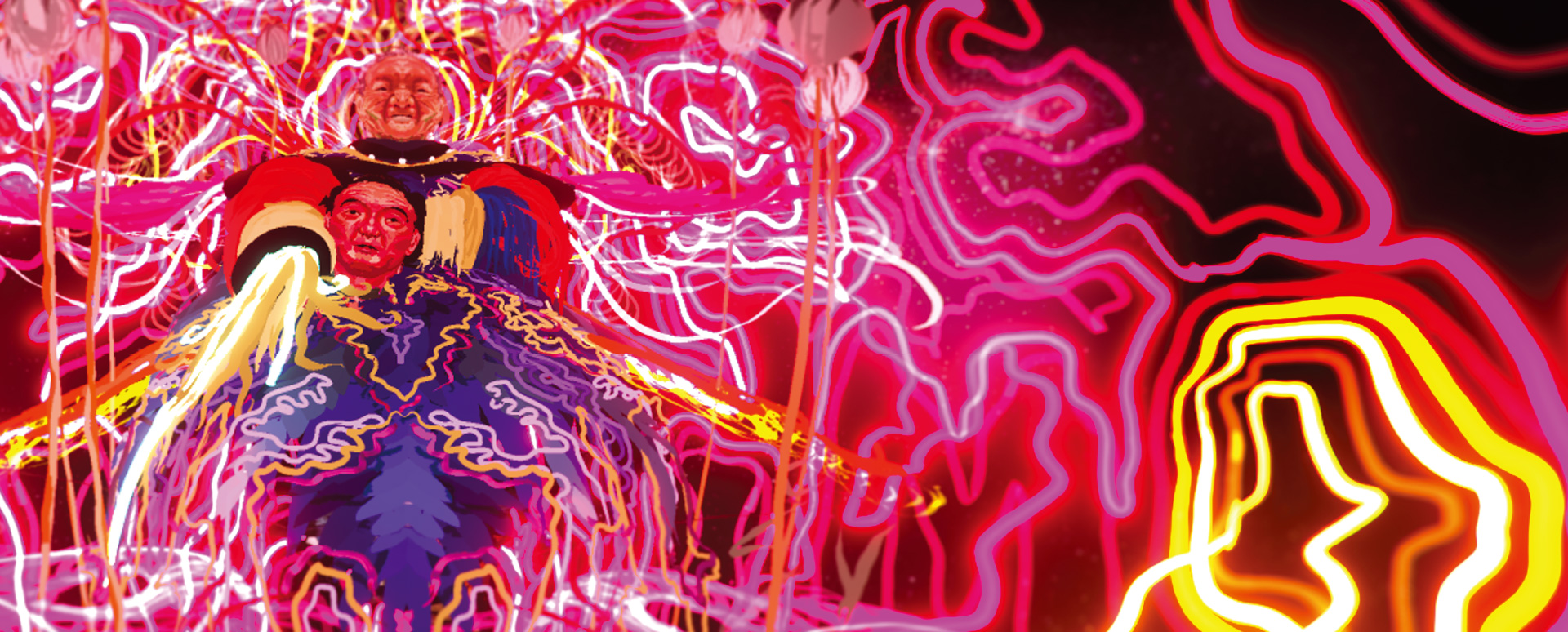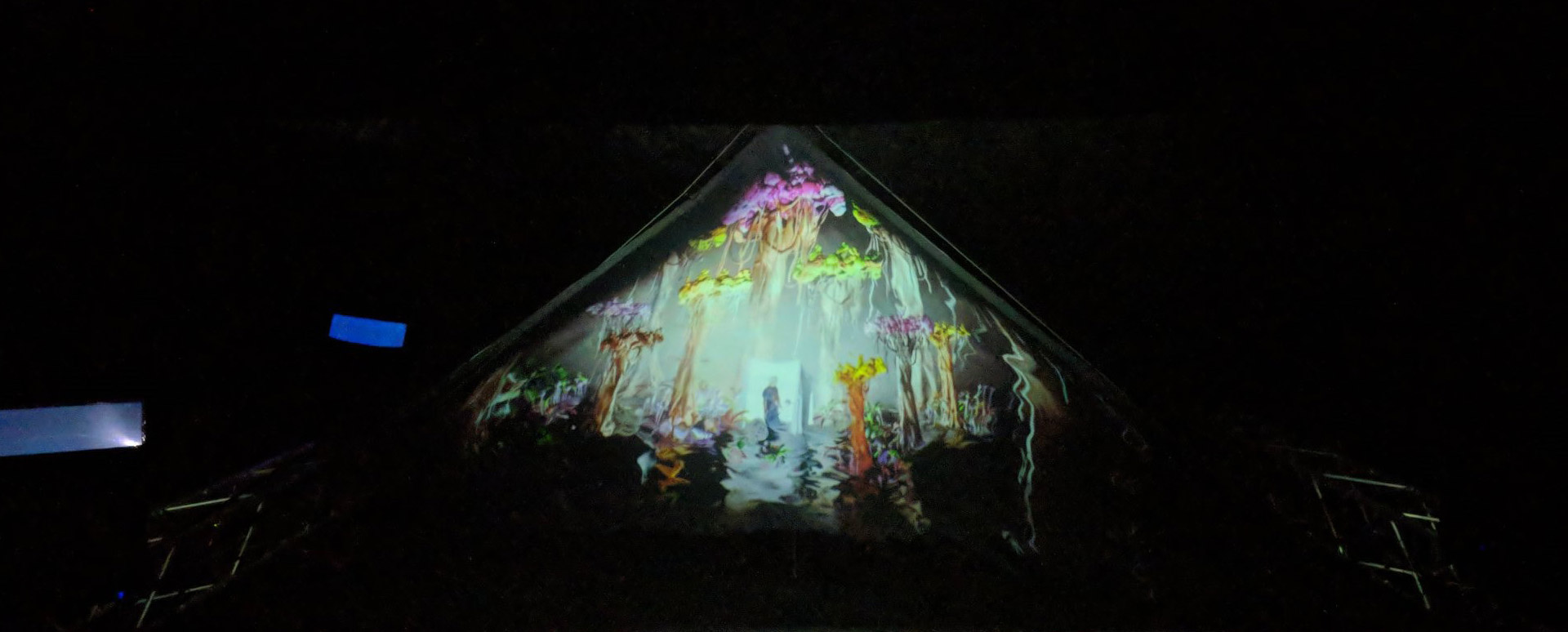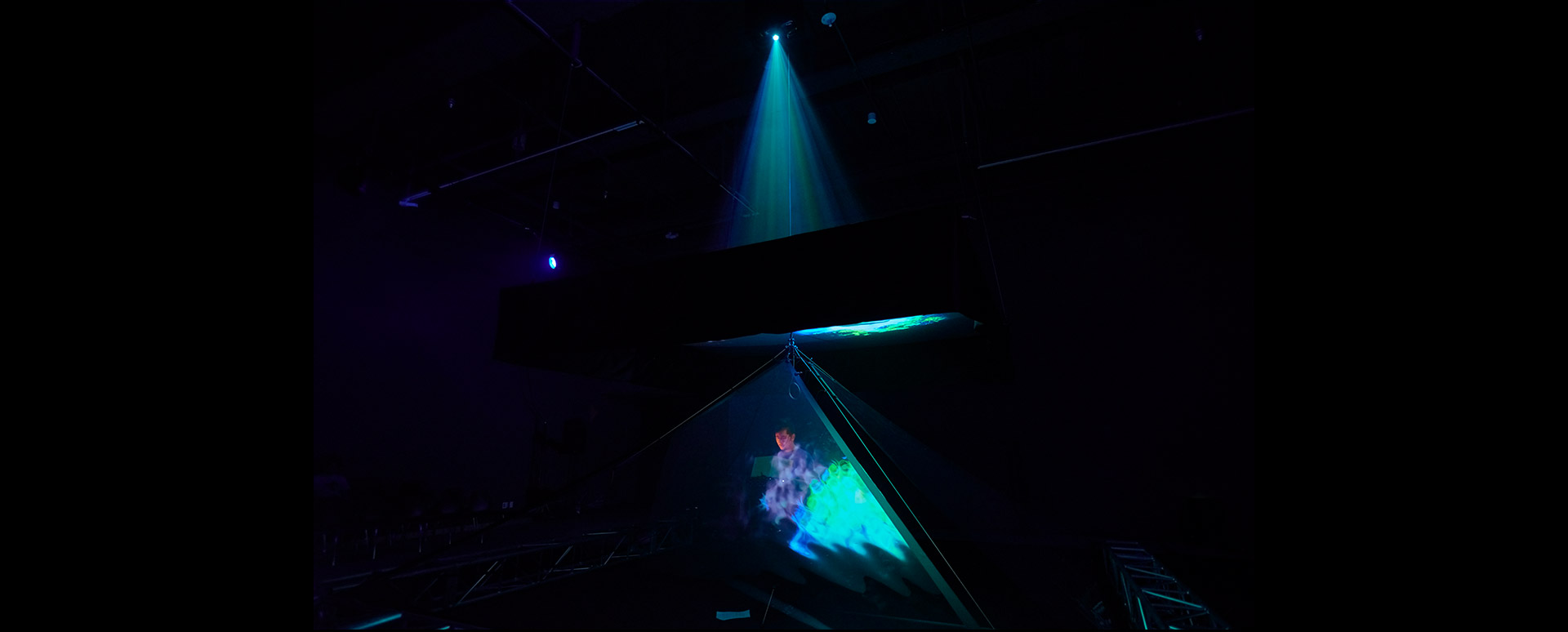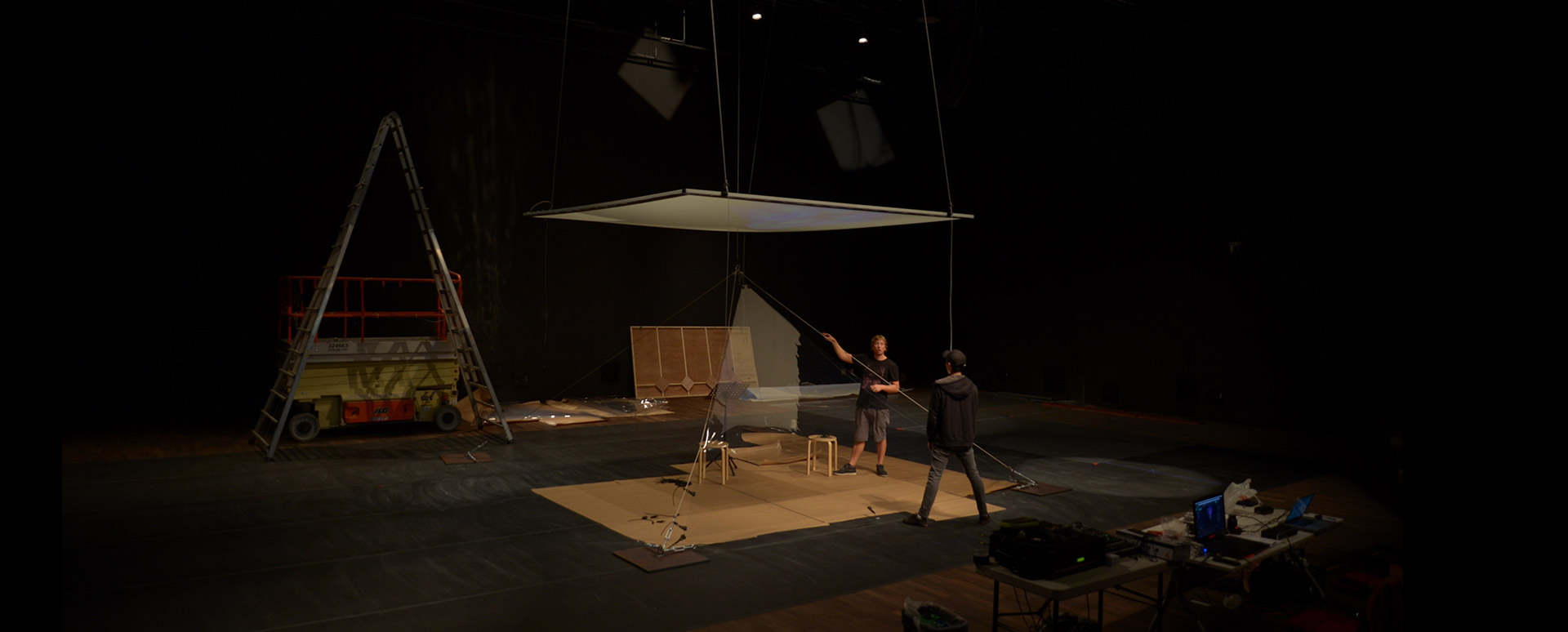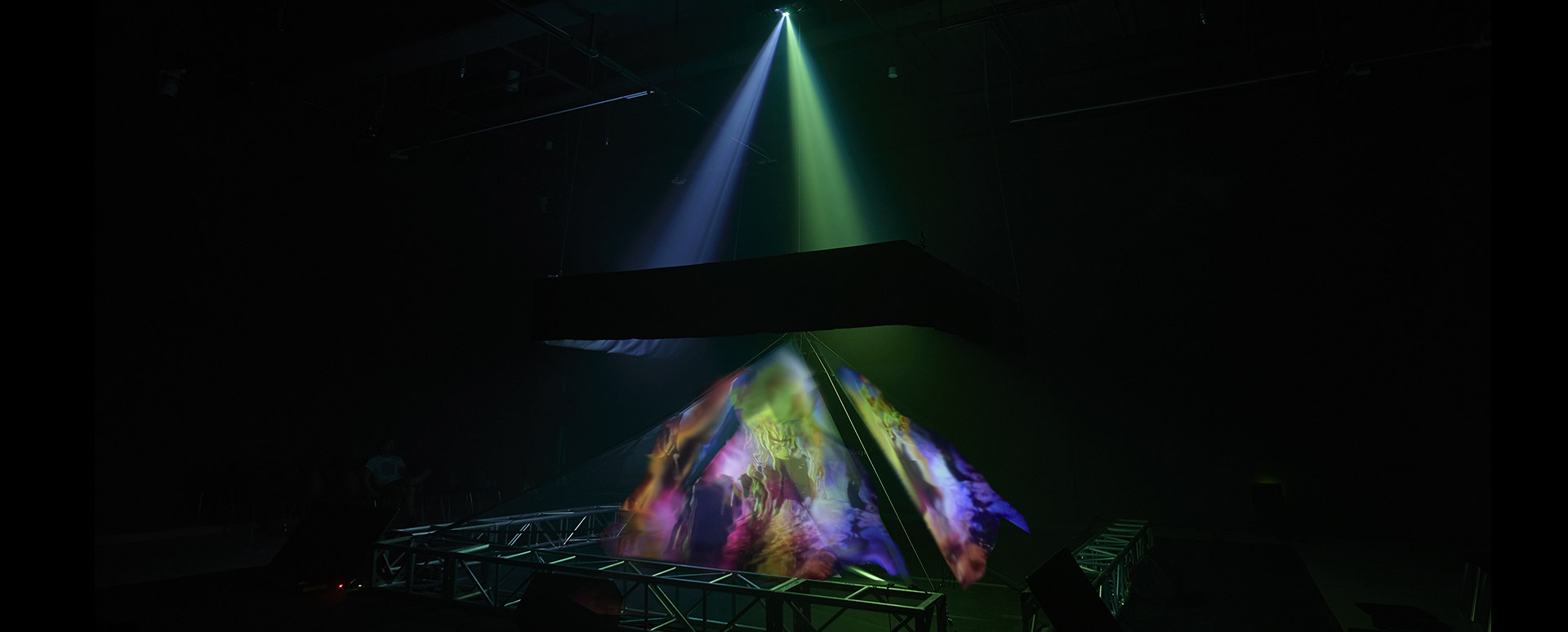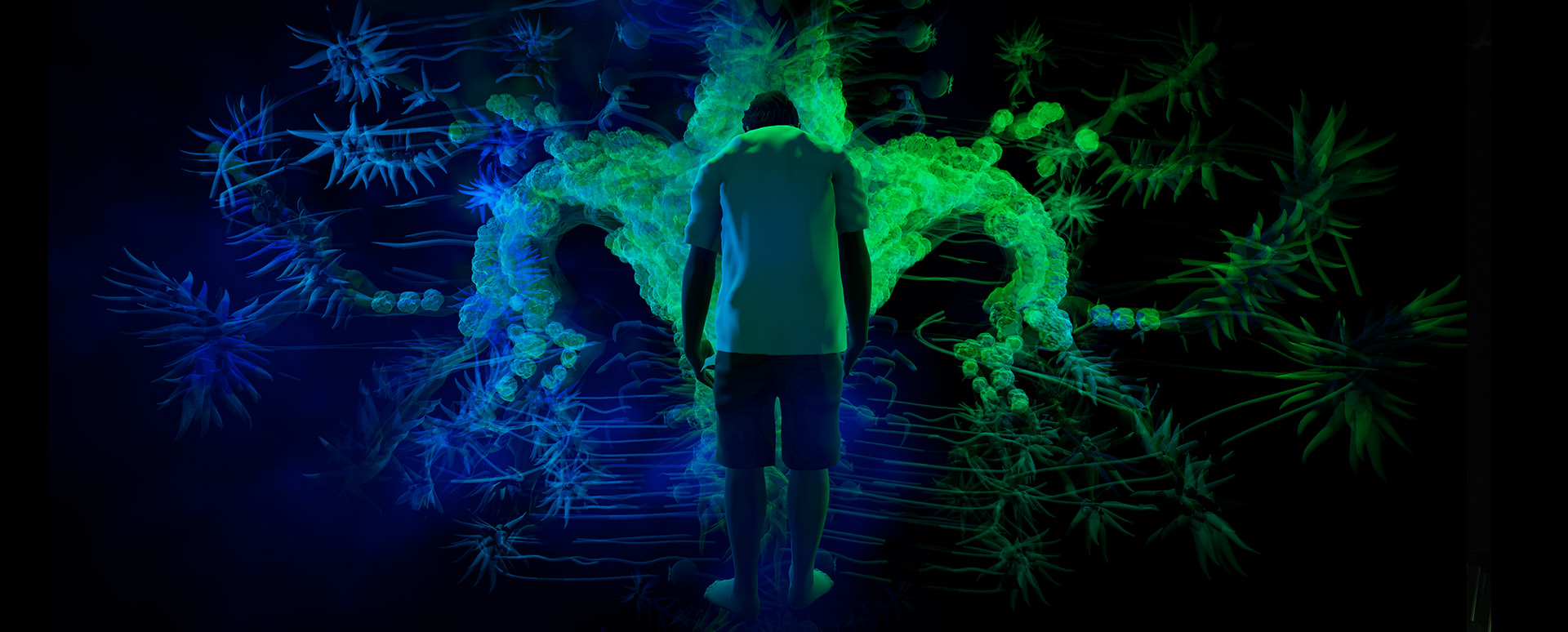In memory of Her or Him
Transsexual Olive Yang (Yang Kyin Hsiu) rose to power during the Chinese Civil War in the late 1940s, becoming a leading warlord on the Sino-Myanmar border. Seeking a way to support her army, Yang developed massive opium farms and trafficking routes, a business which gradually turned into Asia’s major opiate production site: the Golden Triangle. Queen Zomia, avant-garde artist Royce Ng’s second work in his Museum of Opium trilogy, takes a multi-stranded look at the different narratives that brought about such a development. Through an intriguing dream-like dialogue, visualised into hallucinatory holographic images that are captured within a transparent glass “triangle”, the Hong Kong/Australian creative force produces a powerfully resonant 3D rendition of history.
Sharing session after each performance
Co-produced by: The National Museum of Modern and Contemporary Art, Korea, Kampnagel Hamburg, Hong Kong New Vision Arts Festival, Zürcher Theater Spektakel
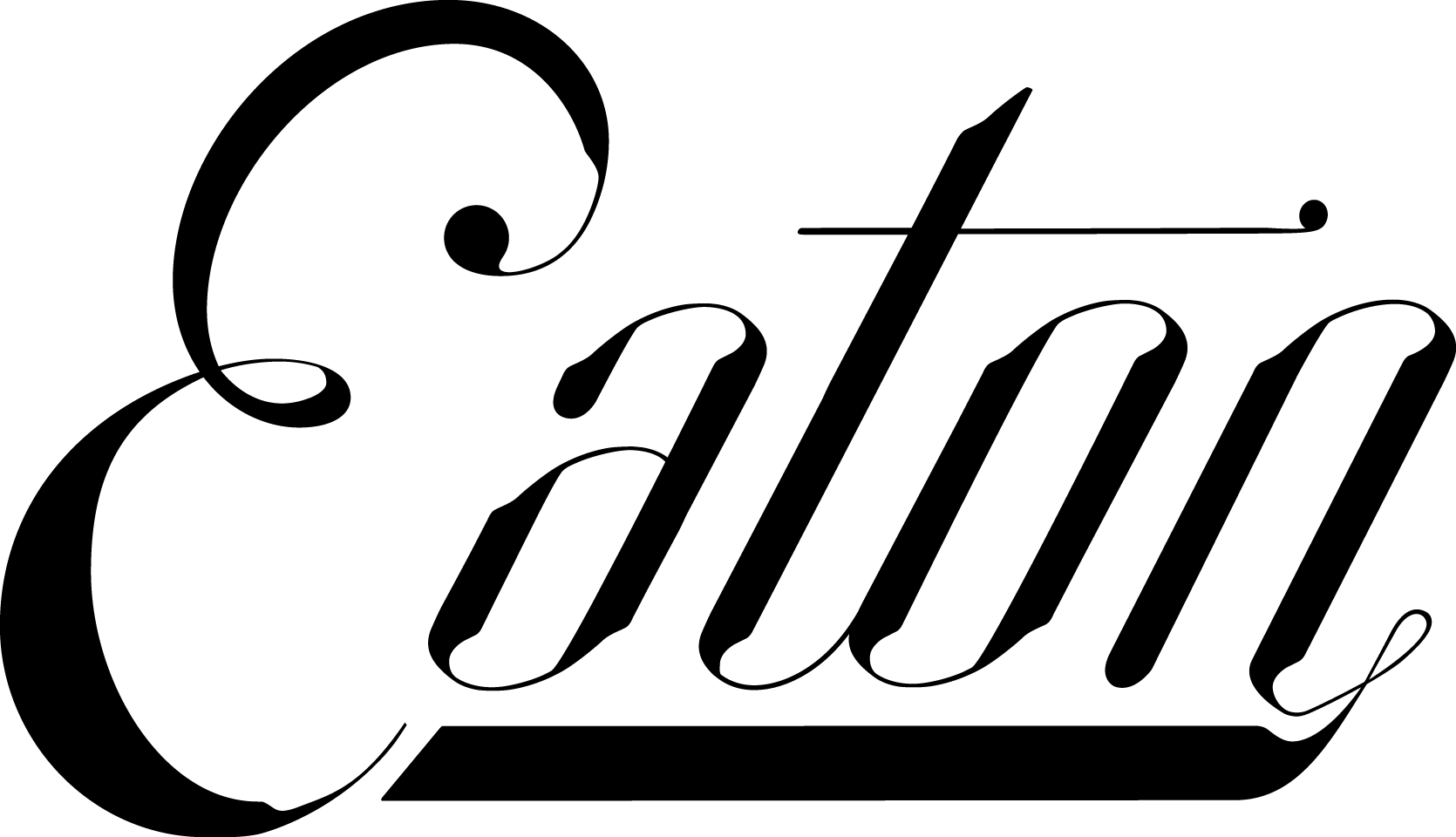
Special thanks to Eaton HK where Queen Zomia was developed during the Eaton HK artist residency programme from March to April 2018.
Statue sparks a trilogy
Queen Zomia will be presented by Melbourne-born, Hong Kong-based artist Royce Ng.
He was walking down the street in New York’s Chinatown in 2015 when he came across a statue of what seemed to be an ancient Chinese figure, with a plaque at the bottom inscribed with the words, “Don’t do drugs”.
The statue was of Lin Zexu, the Qing-dynasty (1644-1912) Chinese official best known for his 1839 anti-opium campaign and his role in the first Sino-British opium war.
The chance encounter prompted Ng to research the history of the opium wars and inspired his trilogy, called Opium Museum, looking at the role the poppy has played in global politics.
He is bringing the second instalment to ArtSnap, which will be performed at the Kwai Tsing Theatre Black Box Theatre from November 9 to 11.
Ghostly drug warlord returns
Queen Zomia focuses on a historical figure, Olive Yang, a gender-bending bisexual woman known for her pivotal role in the Golden Triangle’s opium trafficking during the 1950s and ’60s.
“Zomia” is a geographical term created by historian Willem van Schendel of the University of Amsterdam to refer to the region in which Yang was based.
“She’s an interesting figure because in a way she was so fluid personally, but also politically [as] she was working for the Kuomintang … [and] receiving funds from the CIA during the Cold War,” Ng says.
Yang belonged to a clan that held a long lineage with Imperial China.
She organised the thousand-strong ethnic Kokang forces in what is now Myanmar, nicknamed Olive’s Boys, who controlled the opium trade routes across the lowland and highland areas.
Married with a child, Yang was also known to have had affairs with many film actresses and female singers.
“She dressed as a man and to be even accepted at that time, as a female, as the leader of an entire army, it was incredible really,” Ng says.
Yang’s fluidity makes her “a great siphon to tell this wider story about the history of opium in Asia”, he says.
For the project, Ng carried out research for six months, which took him to the tri-state region between Myanmar, Thailand and Laos, where he visited museums, both private and government-run, about the opium trade.
He also located a document in National Library of Australia in Canberra, written by a relative of Yang.
“I tried to track down her son, who’s still alive and living in Chiang Mai,” Ng says. “I found out that he didn’t want to be found, so I respected that.”
Ng is also quick to say that he does not intend to speak for Yang in the performance, and that the central focus of his story will be on the opium.
Queen Zomia will take the audience on a journey of sights and sounds, with the visuals conjured up using a 19th-century English technique called Pepper’s ghost.
“I’m primarily a visual artist and the medium I work with a lot is 3D animation,” Ng says. “I’ve worked with my team to create a pyramid, and the sides of the pyramid are made from a highly reflective holographic material.
“Then we project my animations from above onto another screen, and from the angle between the side of the pyramid and the projections above the screen, you create a hologram in the centre of the pyramid.
“This triangular structure relates to the idea of focusing on the Golden Triangle.”
Ng will be sitting in the triangle to narrate the story while surreal electronic music, written specifically for the show, plays.
His trilogy began as a commission from the National Museum of Modern and Contemporary Art in South Korea, with Queen Zomia preceded by Kishi the Vampire, another audio-visual narrative, about the Japanese puppet state of Manchukuo, where the opium epidemic and sexual exploitation were rampant.
It touched such a raw nerve that the performance has been banned by Japan.
However, do not expect Queen Zomia to be a full-on history lesson.
“I’m not really offering any answers, or any kind of definitive historical account of this era,” Ng says.
“The narrative was quite minimal and it stops very clearly at a certain point. I really stuck to this concentrated period for the first 40 years of Olive’s life.
“It’s almost like a tease for people to enter into this world in this story and pique their interest.”
Queen Zomia had its premiere in Seoul at the end of September and has just finished its run in Hamburg, Germany.
The final part of the trilogy is still unwritten.
“In theory, the third part is about Hong Kong, which I haven’t begun working on,” Ng says.
Yet there is a clue: one of the latest things he has been reading is called “The Man Who Owned All the Opium in Hong Kong”.
[Extracted from “Opium wars take centre stage at Hong Kong’s New Vision Arts Festival”, South China Morning Post, 19 October 2018.]










